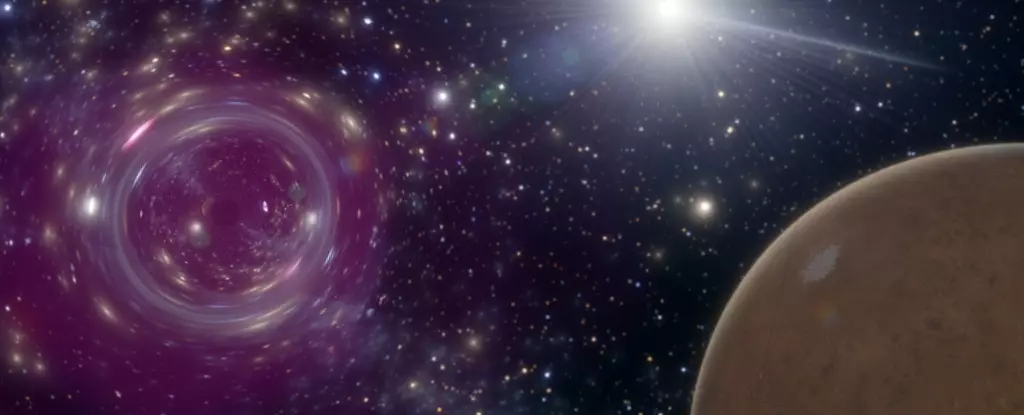Recent academic explorations have reignited interest in an extraordinary and elusive concept: primordial black holes (PBHs). These hypothetical celestial entities, theorized to have emerged shortly after the Big Bang, possess unique characteristics that intrigue scientists looking to untangle the mysteries of the universe. A recent study suggests that these minuscule ancient black holes might traverse our Solar System as frequently as once every decade, offering potential insights into the pervasive enigma of dark matter. The implications of such encounters could not only boost our understanding of black holes but also reshape our perspective on the composition of the universe itself.
Understanding Primordial Black Holes
Primordial black holes are distinct from the stellar and supermassive black holes we commonly see in the cosmos. Formed from the rapid collapse of dense regions of ionized matter in the infant universe, their origins date back to the first moments following the Big Bang. Unlike typical black holes created from collapsed stars that are relatively massive, PBHs can be tiny—potentially compacting the mass of an asteroid into a volume comparable to that of an atom. This makes them intriguing candidates in the quest to identify dark matter—an invisible substance that comprises roughly 27% of the universe yet eludes direct detection.
A team of physicists has recently conducted a study to hypothesize about these PBHs and their passage through our Solar System. Their findings suggest that we might encounter a primordial black hole approximately every ten years. While direct observation of such objects is inherently challenging, the researchers propose that their moments of transit would manifest as subtle yet detectable disturbances in the orbit of Mars. Specifically, if a PBH was to come within 450 million kilometers of the red planet, it could induce a wobble in Martian orbit, detectable to the right instruments within the confines of just a few meters over a decade.
The study’s excitement begins with an imaginative hypothetical scenario: envisioning the effects of a PBH flying alarmingly close to an individual. Lead researcher Tung Tran and his colleagues calculated that such an encounter could, theoretically, hurl a person six meters away if a black hole came within just one meter. While this thought experiment entertains the mind, it also sparked serious inquiries regarding the more tangible effects of PBH encounters with planets and celestial bodies.
To evaluate these cosmic disturbances accurately, the researchers simulated potential PBH flybys on various planets, settling on Mars as the prime candidate. This decision was driven by Mars’ extensive observational data, which could enhance the likelihood of detecting subtle orbital shifts. The feedback loop of simulation and observational data is crucial here, as it bridges theoretical expectations and empirical confirmation.
Given that the gravitational effects of passing asteroids also exist, one might wonder how a PBH’s influence could be distinguished from that of a conventional space rock. The researchers have noted some complexities: while asteroids travel slowly within the solar system, PBHs cruise at staggering velocities, approaching speeds of up to 200 kilometers per second. This stark difference in movement allows physicists to anticipate a more immediate and pronounced impact from PBHs, marking them as a truly unique signaling signature amid the vast array of celestial bodies.
Despite exciting prospects, researchers acknowledge that the study raises many questions demanding further exploration. Physicist David Kaiser from MIT emphasizes the necessity for detailed simulations involving more objects to refine our understanding of interactions within this cosmic dance. Establishing clearer backgrounds—specifically regarding the typical speeds and distributions of ordinary asteroids in opposition to PBHs—could significantly enhance our recognition of these primordial entities.
The beguiling nature of primordial black holes opens avenues backed by theoretical modeling and physics that could reshape our understanding of dark matter and the universe at large. As physicists hone their tools and sharpen their methodologies, there lies the tantalizing possibility that a real Martian wobble could one day reveal profound cosmological secrets, turning conjecture into tangible insights. The cosmos, after all, may still possess its share of captivating surprises.


Leave a Reply